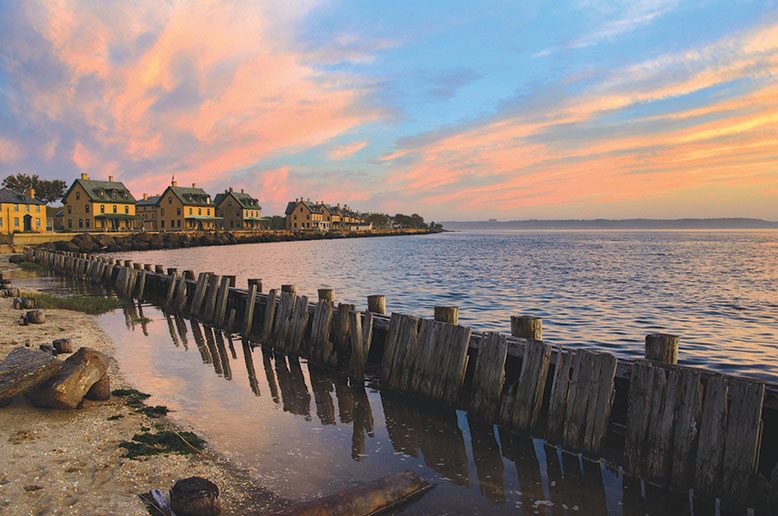
Long before Sandy Hook was a beachgoers’ paradise, it was a strategic outpost that helped defend New York Harbor. But the narrow peninsula could not defend itself against Hurricane Sandy, which swept over Sandy Hook in October 2012, flooding many of its historic buildings, clogging roads and threatening the future of Fort Hancock, Sandy Hook’s complex of military structures.
“There was 4 to 8 feet of sand on the roads,” recalls Jennifer T. Nersesian, superintendent of the Gateway National Recreation Area, the National Park System unit that oversees the Fort Hancock Historic District. “There was 13 feet of water in some places that took weeks and weeks to recede. We had no power and no utilities, and a lot of the infrastructure was seriously damaged.”
Three summers later, Sandy Hook’s seven miles of beaches and all of its parking lots are again open to the public. Food trucks in all of the parking lots have replaced the park’s battered concession areas. Among the historic buildings, only the lighthouse keeper’s quarters and several gun batteries are open for summer programs.
“We are still working on things like getting the visitors’ center taken care of and the history house back open,” says Nersesian.
The restoration of the historic district won’t stop there. “We need to do a lot of work on the buildings,” says Nersesian. “They are beautiful buildings. Old officers’ quarters, officers’ clubs and barracks buildings. It is stunning, and all of this with a tremendous ocean view.”
Sandy Hook’s history as a military installation goes back to colonial times. According to Nersesian, the area was in loyalist hands during the American Revolution. It served the new nation in the decades that followed. “It was significant in the War of 1812 and the Civil War,” says Nersesian. Fort Hancock itself dates to 1895. “In World War II, there were about 7,000 people living out there. It was the first place in the country where we had women stationed at a fighting installation during World War II, and it was still active all the way up through the Cold War.”
Military history was made on several other occasions on Sandy Hook. In 1893, it was the site of the first disappearing gun battery. And during the Cold War, Nike missiles were based there. The missile sites were unaffected by Sandy and remain open for guided tours.
Historic preservation, as Nersesian points out, “does not come cheaply.” In fact, Gateway is looking to forge some unique partnerships to help support its restoration efforts. “The best way to preserve something for the long term is to have somebody in it, using it day in and day out—living there, or using it for an office or a business,” says Nersesian. “So we are looking for private/public partnerships. People who can help us invest in restoration of these buildings in exchange for a long-term lease.”
What kind of businesses can the public expect? “We recently put out six requests for proposals—two for a bed and breakfast, two for a residence or office use, and two for nonprofits,” explains Nersesian.
Development won’t be haphazard. Even before Sandy, Gateway established the Fort Hancock 21st Century Advisory Committee to advise on future use of the historic district. “The park wanted to become engaged with the local community and be transparent as it developed plans for future uses at Fort Hancock,” says Nersesian.
The effort is essential, says Nersesian. “This is part of who we are as a country. Understanding where we came from, what we went through, the significance of this place and the pieces of history it is tied to have shaped who we are as a people.”



